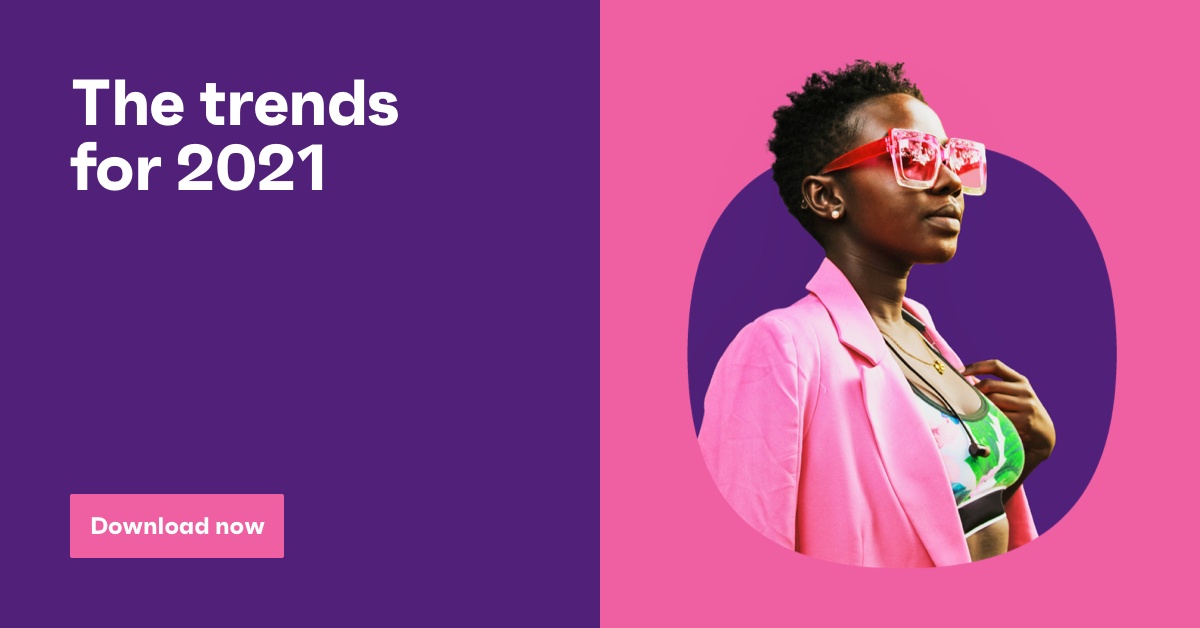Imagine a disease that, every year, killed 800,000 people, and cost the world economy $1 trillion. A disease invisible to the naked eye and without a vaccine to cure it.
Unfortunately, you don’t have to imagine. It does exist, and it spends much of its time out of the spotlight. It’s not COVID-19, nor is it a disease in the classical sense. It’s depression, anxiety, post-traumatic stress disorder, and everything else under the umbrella term “mental health conditions”.
Very few predicted 2020 would be defined by a pandemic. But it’s sown the seeds for an almost inevitable health crisis next year, one for which we all need to prepare.
Here we talk about the important mental health trends we’ve seen ahead of 2021.
Treat every day like Mental Health Day
In the early days of the pandemic, businesses stepped in and contributed to a global effort where governments could or would not. They made PPE. They kept quarantined populations entertained, inspired, and supported. Beer and perfume makers became sanitizer specialists.
2021 – and beyond – will be dominated by a health crisis less likely to make the headlines, but one that will need businesses on the frontline once again. When surveyed in September, consumers were understandably most concerned about their physical health. But it was telling that mental wellbeing (31%) was more of a concern than access to a vaccine (29%).
Before widespread vaccination can be achieved, countries around the world are likely to face more cycles of restrictions and stay-at-home orders, which will have a further impact on mental health trends.
Having done their bit to fight the pandemic, businesses now need to recognise they have a role to play again, coming to the frontline to help manage its long-lasting side-effects.
Mental health trends among vulnerable groups
Make no mistake – we expect most people, and most businesses, to be affected in some way.
But our research has identified particular audience insights, and companies whose customers (or employees) fall into the following categories should pay particular attention.

Academic research has shown the biggest increases in distress have been among the young, who have suffered huge disruption to their education and early adult life. Women have been disproportionately affected too, with many having to take on a greater burden of family care.
Some youth-focused brands have already made sensitive responses to support an age bracket whose schooling and career plans have taken a big hit.
Abercrombie and Fitch has broadcast a miniseries looking at mental health topics with soccer player Megan Rapinoe, while JanSport’s back-to-school #LightenTheLoad campaign is another meaningful and supportive example.
“Doomscrolling” has been one of 2020’s most influential buzzwords, and our research shows just how much excessive consumption of online news and social media can be detrimental to mental health.
They’re still a vital part of consumers’ lives, and can be positive tools for mental wellbeing – social media is in fact only just behind medical professionals in the list of sources people have reached out to. But there is clearly a balance to be struck between reporting information, and recognizing the cumulative toll that has on readers and viewers.
At the six month point of the pandemic a viral Twitter thread from Dr Aisha Ahmad likened the situation to being in a conflict zone, and it’s a useful way to understand what’s at stake for people’s mental health.
One of the more surprising groups at risk is those living with friends or roommates.
While isolation can conventionally be a triggering factor behind mental health conditions, those living alone are currently less concerned (26%).
Cabin fever has likely set in for many households where personal space may have been compromised by stay-at-home orders. In July, dating app Bumble partnered with wine brand Babe to cover the moving costs of those stuck living with an ex-partner, and it’s a great example of how imaginative actions from marketers can draw awareness to issues often hidden behind closed doors.
The role of media in mental health
Mental health trends were emerging even before COVID, and the pandemic has made an urgent and complex problem even worse.
Friends and family are the most popular group for consumers to reach out to, and social media has been a boon to many.
But universities and workplaces could be doing more to support their students and employees.

Consumers have frequently turned to music and TV to relax and de-stress, so media companies are well-placed to help. Streaming platforms could push playlists, shows, and other content tailored for relaxation, as both Spotify and Apple Music have with “Daily Wellness” and “Do Not Disturb” respectively.
Offline activities are a popular way to unwind too, so even deeply digital businesses shouldn’t be afraid to support their consumers with tools to disconnect.

It’s unlikely the mental health crisis of the next few years will receive the same attention through billboards, posters, and regular government briefings. Instead of dominating conversation, there’s every chance people will find it difficult to speak out about their experience. But the damage could be just as severe.
We saw businesses rise to the challenge of an unprecedented pandemic, recognizing their actions could meaningfully contribute to a global health crisis. But what some have called the “hidden wave” is lying in wait. Vaccines may eventually account for the virus itself – but the mental health impact will persist for years to come. We neglect it at our peril.

If you or someone you know has been affected by the topic of this article and are looking for someone to talk to there are resources available to help. Click here for mental health resources based in the UK, or here for resources based in the USA.


